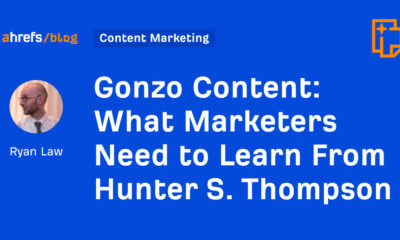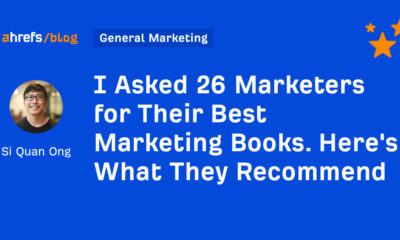MARKETING
What Marketers Get Wrong About Content’s Role in the New Buyer’s Journey
Many people talk (and write) about how the B2B marketing process has changed. But they overlook how the entire buying process has changed.
Volumes of research and points of view articles explore how digital marketing needs to change to meet the needs of the modern B2B buyer. Heck, I’ve written plenty of them.
But it’s not a one-way street. The Internet and associated digital technology have also upended the way B2B customers research and purchase things.
You’ll find it easier to adapt your B2B marketing process if you first understand how B2B buyers’ journeys have changed (and why).
To get better at #B2B marketing, you need to understand how the buyer’s journey has changed, says @Robert_Rose via @CMIContent. Click To Tweet
Let go of the outmoded discovery-driven buyer’s journey
Have you ever wondered why the sales department holds such a powerful voice in your organization?
Before the web era, discovery drove the B2B buying cycle. When it came to new or innovative purchases (as opposed to simple commodity repurchases), buyers would discover options for new products and services through their existing relationships with current vendors and in print trade journals.
Buyers needed education about changing materials, technologies, and services to give their business an edge, as they still do today. But once they discovered that this new “thing” existed, they’d turn to their existing, trusted network of existing vendors and partners for information.
One B2B study from 1987 found a “strong association of newness and the amount of information desired, but a weak correlation of this information and the consideration of alternative sources” when purchasing new products and services.
Put simply: B2B buyers needed more information for new purchases, and they preferred to get that information from their existing vendor relationships.
Is it any wonder that in the 1984 book Industrial Marketing Strategy, the authors discuss the importance of the relationships between sales personnel and buyers? They wrote that “buyers have a heavy reliance on their sales representatives… [they are] the backbone of new product marketing effectiveness.”
Today, we all understand that the process of gathering product information and the information sources themselves have fundamentally changed. What’s not as clear is whether the role of salespeople is decreasing or if buyers are longing to trust their sales representatives to steer them to information and options.
An article in Harvard Business Review indicates the latter may be true. The authors describe the modern salesperson as more than a facilitator of a sale, but also an “educator, negotiator, consultant, solution configurator, service provider, and relationship manager. They are integral to discovering the ‘something more’ that customers want.”
#B2B buyers once turned to trusted vendors for purchasing advice. Are those days really over, asks @Robert_Rose? Or are buyers longing for our help? Via @CMIContent Click To Tweet
Understand the new change-driven buyer’s journey
Regardless of the salesperson’s role, the buyer’s journey has evolved into a change-driven process. Decisions about new purchases at B2B companies have become what sociologists would call an “intentional change process.”
The intentional change process is a theory developed by Richard Boyatzis, a professor at Case Western Reserve University. It outlines five common-sense steps to follow to make a lasting change. The five steps include:
- Envision the ideal destination (by describing a desired outcome for our future)
- Explore the gaps to get there (by asking what is needed to manifest that future)
- Develop a learning agenda (by developing our expertise to build roadmaps)
- Execute and practice the new habits (by deploying a test of the new habit)
- Get support (by solidifying the relationships that will help us stick to the new habit)
The prototypical B2B buyer’s journey today lines up with the intentional change process almost exactly:
- Envision a destination (awareness). In the B2B buyer’s journey, companies increasingly start with a desired future change.
- Explore the gaps (discovery). Then, an assembled team explores and focuses on internal gaps to narrow down the type of solution that makes the most sense.
- Develop a learning agenda (learn and try). The team collects information from vendors, consultants, analysts, and even competitors to become subject matter experts in this solution category. Next comes a trial of the product, a prototype of the new operation, or a proof of concept.
- Practice new habits and get support. Once the decision is made, the buying group facilitates the internal process and support for successful change management and implementation of the new solution in the group.

So, what’s the problem? Marketers spend so much time trying to help buyers envision a destination and explore gaps that by the time the buyer is ready to set a learning agenda, they’re overwhelmed and ready to give up.
In focusing so much on convincing B2B buyers they should change, marketers have forgotten that buyers are trying to learn how to change.
In focusing on convincing #B2B buyers they should change, we’ve forgotten to use #ContentMarketing to teach them how to change, says @Robert_Rose via @CMIContent. Click To Tweet
Marketers are missing buyers’ intentions
Since the first three of the five journey steps involve consuming content, many B2B marketers assume they need to create more and more digital information for the buyers to find as they build that knowledge.
They optimize content for organic search results or buy their way to the top of those results. They develop deep learning or resource centers to attract buyers looking for information at step one.
But this approach produces an almost unclimbable mountain of research, information, and education. In fact, research firm Gartner recently pointed out that B2B brands need to rethink their content marketing, saying:
In a world where customers are struggling with too much information rather than not enough, the most successful marketers are focused on providing less information, specifically designed to make buying easier.
B2B marketers need context on where and how to deliver different kinds of information, not just more early-stage information.
The classic marketing goal is to deliver the right message to the right person at the right time. Most businesses have nailed any one of the three, but few manage all three simultaneously.
To get it right, you must understand where the buyer is on their intentional change journey. In other words, what is their actual intent?
The context of the buyer’s intent is the most important thing to understand because it is the only way you can provide the contextual (and differentiating) message that helps buyers make a decision.
An original research project
So, what is the answer?
I recently worked with ContentGINE to develop a framework to answer that question. We wanted to know how B2B marketers can map the buyer’s intentional change journey with data and content consumption tools to gain better insight into potential buying signals.
I’ve created a tiered approach to thought leadership programs that provides a framework for differentiating content, not just overloading buyers with more research and information.
You can read the full paper here.
Buying is about trying to minimize change
Change always requires time and energy. One widespread fallacy about the B2B marketing process is that buyers are looking for the most significant – or most fundamental – change to the solution they want to replace. It’s not true.
Many B2B buyers have set a transformational vision. But the intentional change journey often involves exploring an incremental improvement.
Regardless, buyers want to assemble a roadmap that provides the least amount of disruption on the way to their intended future destination.
Serving contextually relevant content to a buyer based on their intention will almost always be the best next action you can take to help them change.
HANDPICKED RELATED CONTENT:
Cover image by Joseph Kalinowski/Content Marketing Institute



















You must be logged in to post a comment Login